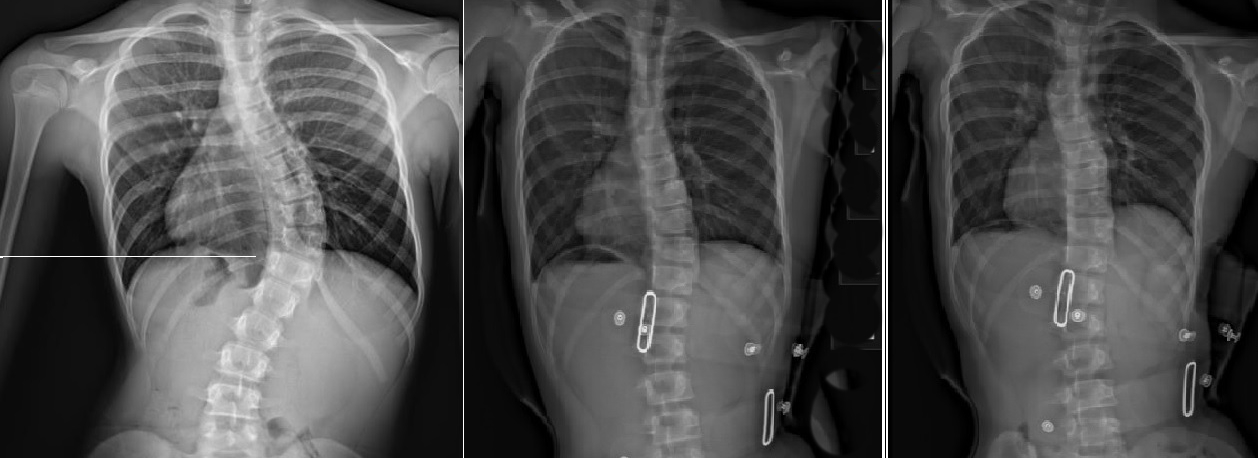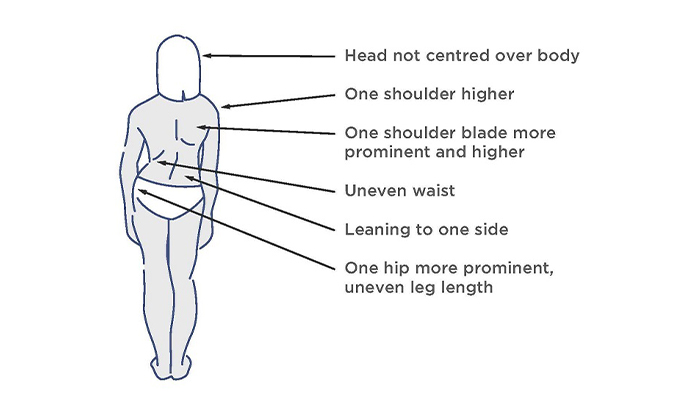
17 October 2022
LOC’s same-day service for scoliosis bracing is the solution for 11-year-old from the Philippines.
On the 5th September LOC was contacted by the family of a 11 year old boy who had recently been diagnosed with adolescent idiopathic scoliosis. His x-rays revealed a right sided thoracic curve with a Cobb angle of 49 degrees.
Initially, Benjamin was assessed remotely by video link by Anna Courtney, head of LOC’s scoliosis team. At his age and with that severity of curve there is almost 100% chance of progression. It was clear that Benjamin would benefit from LOC’s bespoke scoliosis brace to reduce his curve and prevent the need for invasive surgery at a later date.
There was just one problem, the family lived in the Philippines. Naturally, Benjamin’s parents did not want to take him out of school for too long nor did they want to commit to travelling to and fro constantly. LOC’s unique scoliosis service provided the ideal solution.
The family arrived in the UK on the 3rd October for a 90-minute consultation with Anna at LOC’s headquarters clinic in Kingston. The consultation confirmed the decision to provide Benjamin with a bespoke brace. LOC’s scoliosis brace works in three dimensions to reduce the curve. During the day, Anna and LOC’s in-house manufacturing team modelled and then produced Benjamin’s brace so that it was ready to be fitted in the afternoon.
Three dedicated scoliosis physio sessions, based on Schroth principles were arranged with our partner company Scoliosis SOS for the few days the family were in England. For optimum results Benjamin will need to follow a detailed exercise programme when he is back in the Philippines.
Prior to the family returning home, LOC arranged for a new scan to be taken at the European Scanning Centre. This in-brace scan showed an 80% correction of Benjamin’s curve.
In summary: Benjamin was assessed and fitted on Monday, reviewed Tuesday, in brace data collection/ EOS/ x-ray on Wednesday and final brace adjustments on Thursday. This process would take two and a half months elsewhere. LOC is in the unique position of being able to provide this complete service in just four days. This treatment package is available by prior arrangement for all adolescent patients not just those from overseas.
If your child has recently been diagnosed with Scoliosis or you think they are showing signs of the condition, please contact us.
Especially in young people, spotting the early signs of scoliosis is important – as is seeking early treatment. These are the warning signs to look out for:

Visual signs of Scoliosis
You can find out more about the visual signs of scoliosis here.
Find out more information about the LOC Scoliosis Brace
If you think your child, adolescent or adult family member has scoliosis, you can contact LOC directly to arrange a consultation at one of our scoliosis clinics.
If your child has recently been diagnosed with Scoliosis or you think they are showing signs of the condition, please contact us
Scoliosis is a condition where there is an abnormal curvature of the spine. It is a three-dimensional condition with deviation of the vertebrae in the sagittal, coronal and transverse planes.
The simple answer is no. Scoliosis is not hereditary, there is no single known gene responsible for the condition.
Most of the patients LOC see have what is termed idiopathic scoliosis - which means that there is no known medical cause for the condition. What we do know is that scoliosis tends to occur during periods of rapid body growth and adolescents account for over 80% of all diagnosed cases in children.
Scoliosis affects 2-3% of the population. According to the NHS, around three or four in every 1,000 children will require treatment for scoliosis. It is most typically seen in children between the ages of 10 and 15.
In terms of an official diagnosis, scoliosis is confirmed with an x-ray, which is typically followed up with an MRI scan. A key determining factor that is used when proposing a treatment pathway, is what is known as the Cobb angle. This was invented by Dr John Cobb in 1948. It is now the standard measurement to determine and track the progression of scoliosis. A Cobb angle describes the degrees of deviation from straight in the spine. This can be measured by our clinicians, so please feel free to send x-rays to us for assessment.
There are visual clues that a parent should be aware of:
See our visual signs and symptoms of scoliosis post for more information.
Unfortunately, it can. The more growing a child with scoliosis has to do the greater the chance their scoliosis will get worse. A 2017 study found that children with curves of 21-30 degrees had a 72.5% risk of progression to curves in excess of 45 degrees (thus requiring surgery).
Treatment recommendations are based on the Cobb angle of the patient and the risk of progression. For curves under 20 degrees, we monitor the patient’s curve while the patient undertakes a tailored exercise programme based on Schroth principles; this is delivered by our partner in providing scoliosis treatment, Scoliosis SOS.
For curves above 20 degrees, we prescribe our LOC Scoliosis Brace which works three-dimensionally to guide the patient’s spine into a more correct position, substantially reducing their Cobb angle. For optimum correction, we recommend that bracing is combined with specialist physiotherapy.
This joint approach means our patients are getting the best and most appropriate advice from two scoliosis specialists, one with an orthotic perspective and one with a physiotherapy perspective.
LOC understands that time is of the essence, particularly for newly diagnosed adolescents where the scoliosis curve can get worse quickly; we now offer same-day service – a new patient can be assessed and fitted with a bespoke brace on the same day.
LOC makes the vast majority of orthotics we fit, and our scoliosis brace is no exception. It is difficult to over-emphasize how important it is to have our own manufacturing unit on site. Lead times are shorter because we are not reliant on outside suppliers, and we can fine-tune our braces at the fitting stage to ensure optimum efficacy and comfort.
Kyphosis is an excessive curvature of the spine that causes the top of the back to appear more rounded than normal. It can occur at any age but is common during adolescence. The condition is sometimes known as round back. Bracing can provide pain relief for those suffering from kyphosis by adjusting the position of the shoulders and pelvis. In the growing patient, we can prevent the worsening of the deformity and quickly improve appearance.
Typically, there is an initial consultation followed by a fitting appointment and then pre- and post-reviews after in-brace x-rays; thereafter reviews every three months until the end of treatment. For the majority of our patients who are adolescents, we believe it is essential that there are regular assessments and reviews to ensure that the brace is fitting well; we will make tiny adjustments to the brace to ensure optimum comfort and optimum correction. We have found that comfort is a major contributor to an individual’s compliance with the prescribed wearing regime. In addition, the close contact between patient and clinician ensures patient motivation resulting in better outcomes at the treatment end.
As adults have reached skeletal maturity and the vertebrae are no longer malleable, an orthotic brace is unlikely to be able to correct the existing Cobb angle of the patient. However, LOC prescribes bespoke back braces to reduce posture-related pain and improve appearance and posture.
We are pleased to offer a free-of-charge, virtual assessment should you wish to be screened for scoliosis. If we feel a referral to an Orthopaedic Consultant is warranted, we recommend a consultation at The Wimbledon Clinic, Parkside with Mr Darren Lui, Mr Jason Bernard or Mr Tim Bishop. The consultant would arrange the imaging as required. Obviously, you can also seek advice from your family GP.